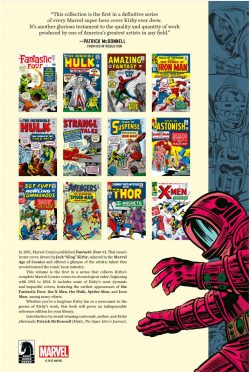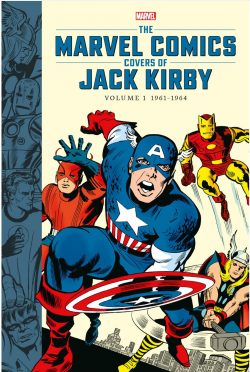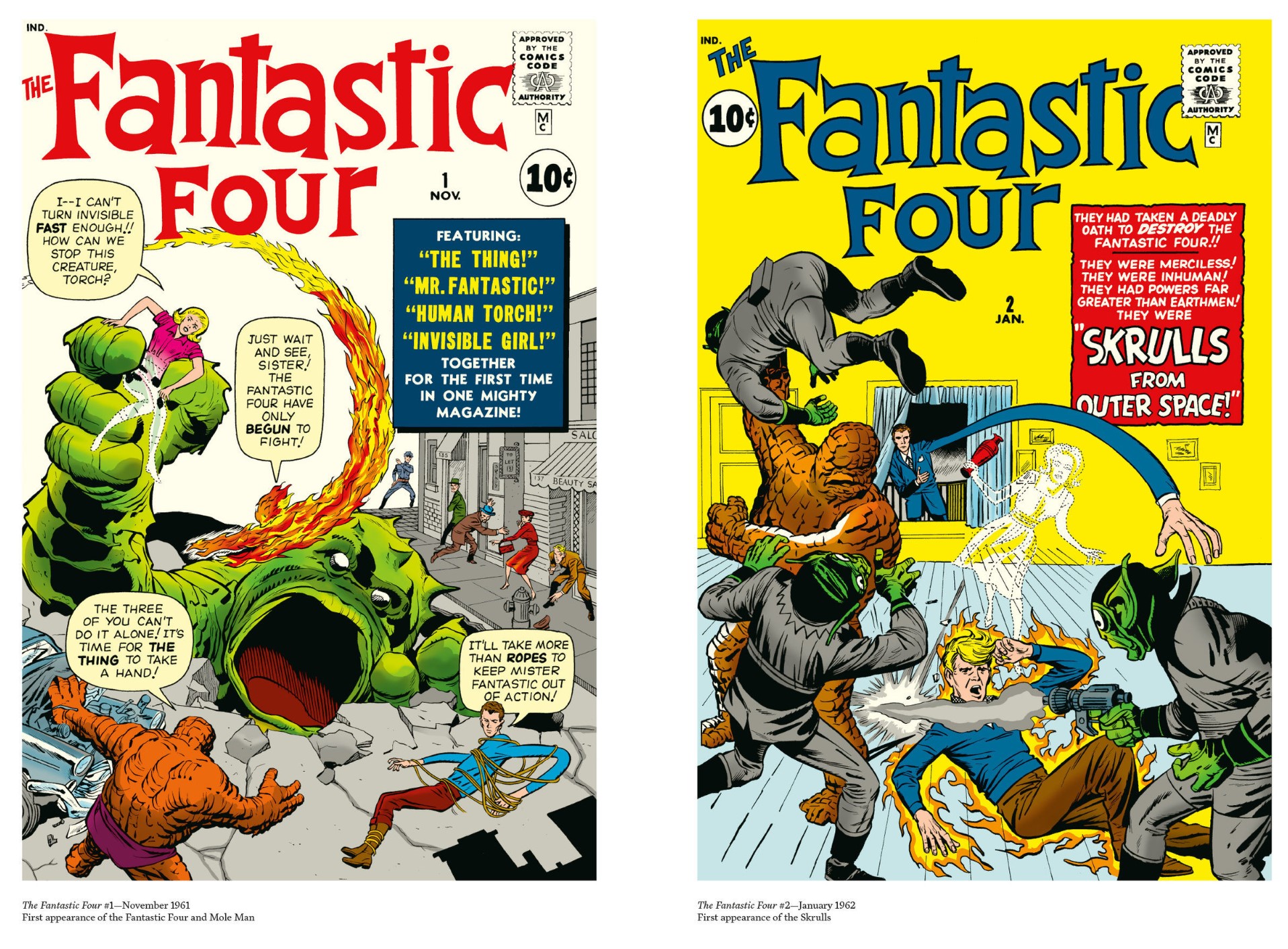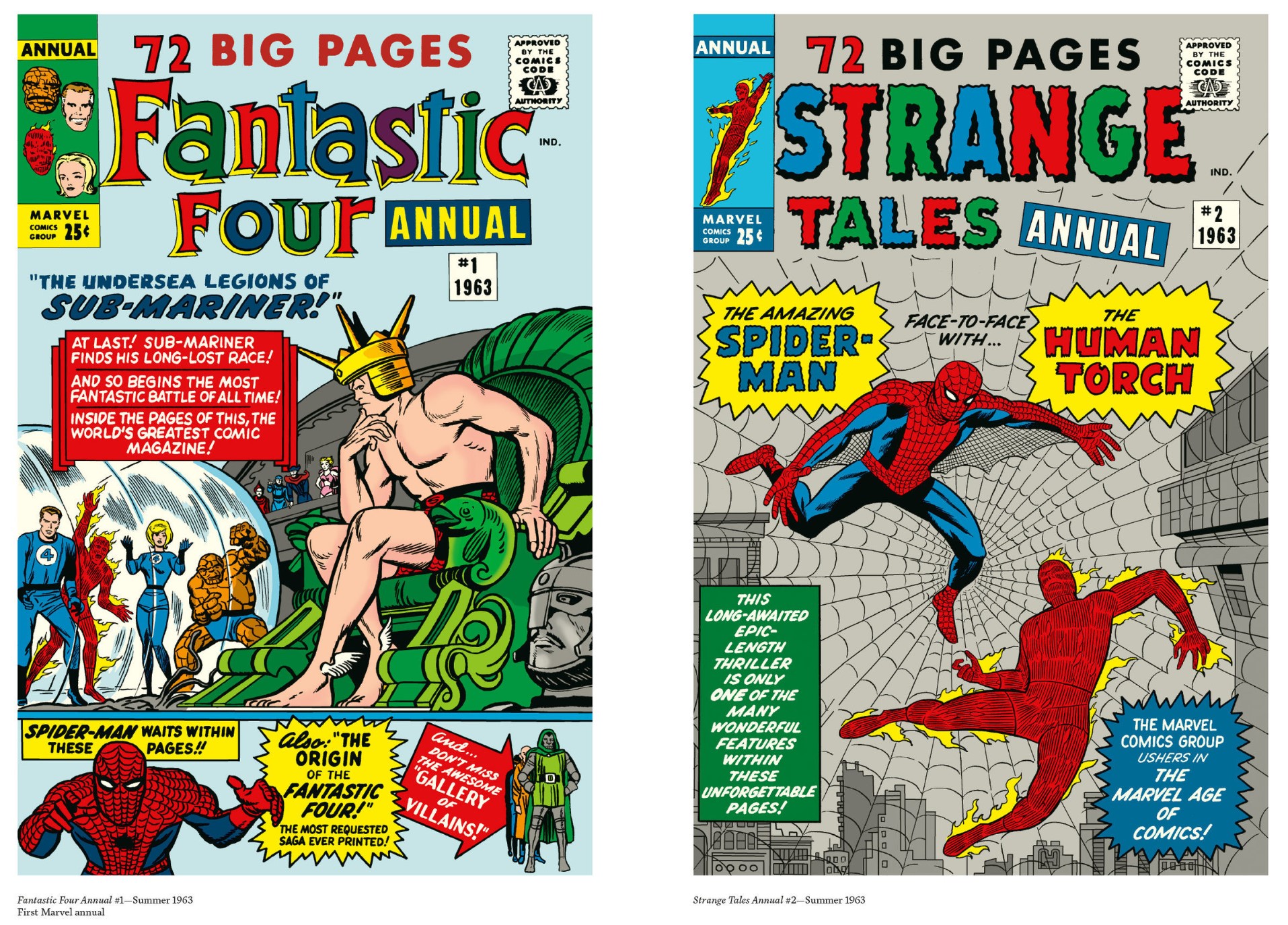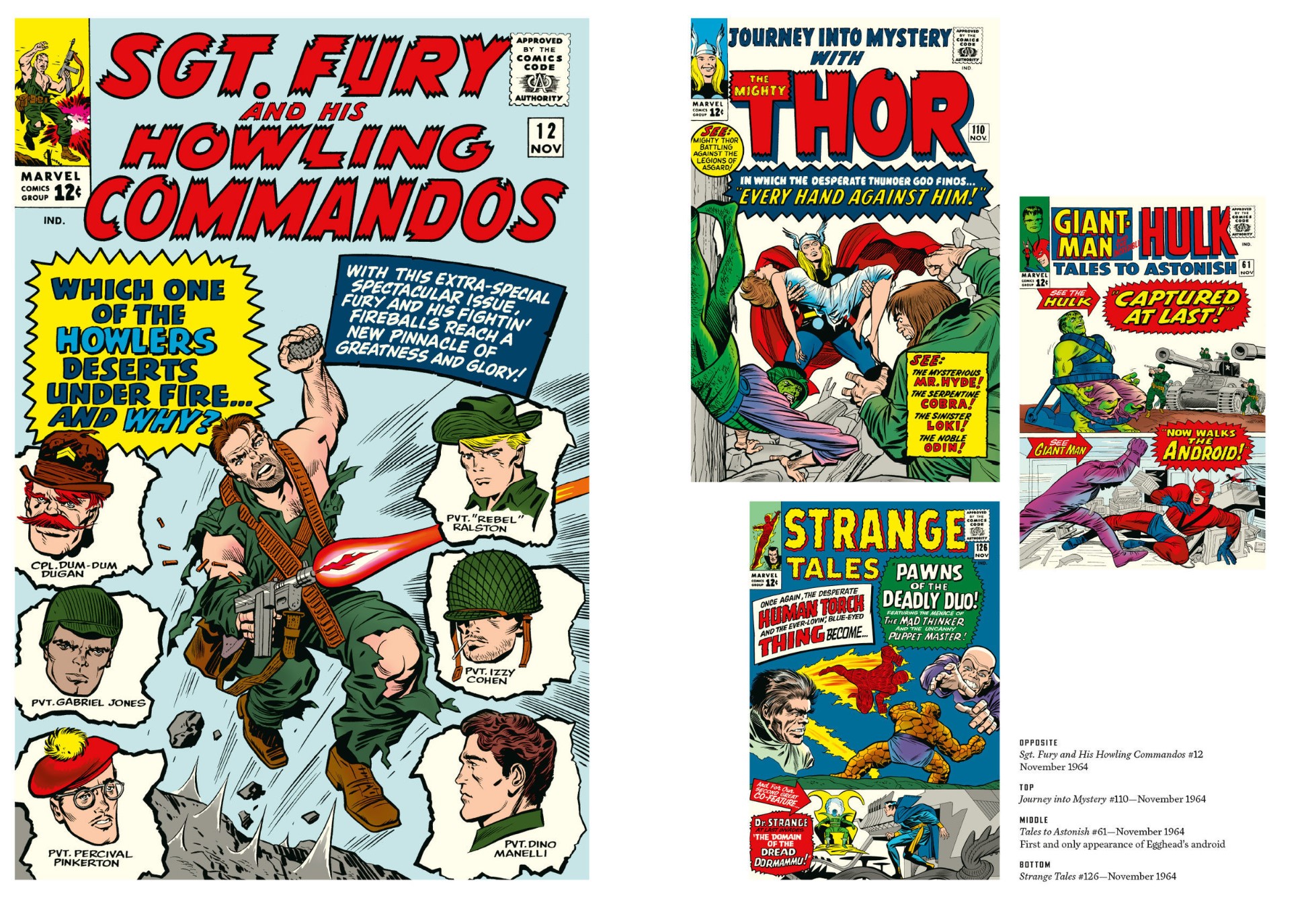

By Len Wein, Roy Thomas, Roger Stern, Bill Mantlo, Don Glut, Don Thompson, Maggie Thompson, Walter Simonson, John Buscema, Sal Buscema, Alan Kupperberg, Wayne Boring, Val Mayerik, Jim Starlin, Virgilio Redondo, Rudy Nebres, Tony DeZuñiga, Tom Palmer, Ernie Chan, Joe Sinnott, Klaus Janson, Chic Stone, Pablo Marcos & various (Marvel)
ISBN: 978-1-3029-4868-9 (TPB/Digital edition)
This book includes Discriminatory Content produced in less enlightened times.
Once upon a time, disabled physician Donald Blake took a vacation in Norway, only to stumble into an alien invasion. Trapped in a cave, he found an ancient walking stick which, when struck against the ground, turned him into the Norse God of Thunder! Within moments, he was defending the weak and smiting the wicked. Months swiftly passed, with the Lord of Storms tackling rapacious extraterrestrials, Commie dictators, costumed crazies and cheap thugs, but these soon gave way to a vast kaleidoscope of fantastic worlds of incredible, mythic menaces, tackled by an ever-changing cast of stalwart immortal warriors at his side…
Whilst the ever-expanding Marvel Universe had grown ever-more interconnected as it matured through its first decade, with characters literally tripping over each other in New York City, the Asgardian heritage of Thor and the soaring imagination of Jack Kirby had most often drawn the Thunder God away from mortal realms into stunning, unique landscapes and scenarios.
However, by the time of this power-packed compendium, the King was long gone – or more accurately enacting his Second Coming – technically Third, and definitely Second Return to the House of (mostly his) Ideas – and only echoes of his groundbreaking presence remained. John Buscema had visually made the Thunder God his own over interceding years, whilst a succession of scripters had struggled with varying success to recapture the epic scope of Kirby’s vision and Stan Lee’s off-kilter but comfortingly compelling faux-Shakespearean verbiage…
Spanning June 1977 to February 1979, this power-packed compilation re-presents The Mighty Thor #260-280, Annuals #6 & 7 and Marvel Preview #10 in a panoply of unceasing stellar adventure spanning time and space and well-explored regions.
Previously, embattled Asgardians had survived another invasion only to learn their divine Liege Lord Odin had gone missing. Having exhausted every avenue of location available, son-&-heir Thor – prompted by vague hints from all-knowing but hostile spirit Mimir – departed to search distant galaxies for a “Doomsday Star” …
Aboard starfaring dragonship Starjammer, the Thunderer, Lady Sif and Warriors Three Fandral, Hogun and Volstagg (solar) sail off, leaving the beleaguered Eternal Realm under Balder the Brave’s stewardship, albeit ably assisted by his dark inamorata Karnilla the Norn Queen. Now in the wake of travail, torment and cruel misunderstanding, and accompanied by the Recorder (a Rigellian AI robot guide), ‘The Vicious and the Valiant’ sees the interstellar questors finally locate the Doomsday Star.
Scripted by writer/editor Len Wein with Walter Simonson (inked by Tony DeZuñiga) making his first major artistic contributions to the mythology, the interstellar quest’s end coincides with an attack on far-distant Asgard where Balder and Karnilla resist an invasion helmed by arch-traitors Enchantress and Executioner. As the voyagers strive to reach a hostile planet with a strict and extreme no-visitors policy, #261 expands the scope and intensifies the action as the questers falter before ‘The Wall Around the World!’ (inked by Ernie Chan): a terrifying global-scaled construct comprised of the power-drained husks of dead gods.
Resolute and determined the seekers push on, learning Odin has been captured and gradually diminished and consumed by energy-leeching “Soul-Survivors” whose civilisation subsists on stolen divine lifeforce. As they valiantly strive to save their sovereign, the roving Asgardians learn to their cost that ‘Even an Immortal Can Die!’ (#262, limned by Simonson & DeZuñiga).

Thankfully, ‘Holocaust and Homecoming!’ proves Odin both wily and still potent as the heroes’ ferocious clash and hard-won victory results in a weary, wounded pantheon returning to Asgard, only to find it taken over by Loki and his cohort of treacherous allies. With Odin in a coma – and ultimately abducted again – covert civil war erupts between the newly restored champions and the city citizens Loki has subverted. ‘Thou Shalt Have No Other Gods Before Me!’ sees the sinister scheme exposed, but not before Loki unleashes ultimate weapon The Destroyer against his adoptive brother…
Inked by Joe Sinnott, #265’s ‘When Falls the God of Thunder…!’ sees Loki losing control of his ultimate sanction, and once again, everyone survival hinges on the determination of Thor and his valiant resistance to chaos, until #266’s ‘…So Falls the Realm Eternal!’, where Wein, Simonson & DeZuñiga show the Thunderer at his indomitable best, holding Loki at bay and off balance until the Warriors Three rescue and revive an extremely unhappy All-Father…
This saga presaged a change of narrative focus but before that Roger Stern, Sal Buscema & Klaus Janson craft ‘Thunder in the 31st Century!’ (as first seen in Thor Annual #6 December 1977). A riot of time-busting mayhem commences with Thor plucked from contemporary Manhattan: accidentally summoned to the time period of the original/future (time travel tenses suck!) Guardians of the Galaxy by a cyborg maniac named Korvac. The immortal god-warrior briefly joins Vance Astro, Charlie 27, Yondu, Nikki, Martinex and Starhawk in bombastic battle against super-powered aliens to thwart the sinister cyborg’s scheme to become master of the universe. At the conclusion, Thor returns to his own place and time, unaware how Korvac would reshape the destiny of reality itself in coming months…
The collaborations of Wein and Simonson had already shaken the title out of its conceptual doldrums; as the big change approached they went into overdrive and an seemingly backward direction. After All-Father Odin was kidnapped, drained like a battery and died, he was rescued, resurrected and restored to an Asgard riven with conspiracies. Conquered by old enemies, Thor faced ultimate weapon The Destroyer before triumphantly saving everything. In #267 (January 1978, Wein, Simonson & DeZuñiga) we see the hero bound ‘Once More, To Midgard!’, following a rare moment of filial fondness rather than the usual arguments with Dad. Thor has been missing for quite some time and his absence has left Don Blake’s life in tatters until old colleague Dr. Jacob Wallaby arranges a job with Stark International’s Free Clinic. That good deed leads to more chaos as deranged super-criminal Damocles ruthlessly raids the hospital’s radiation lab in search of synthetic cobalt to power his new super-gun. Before Blake can react, the smash-&-grab attack is done, leaving furious Thor to pursue the murderous madman, aided by Damocles’ guilt-fuelled sibling Bennett Barlow. He pays a heavy price for his civic service in concluding clash ‘Death, Thy Name is Brother!’
The concentration on Earthly scale and situations continues in #269 as ‘A Walk on the Wild Side!’ sees a mysterious mastermind contract mechanistic mercenary Stilt-Man to secure a certain high-tech package. A raft of deadly upgrades prove pointless after the Thunderer stumbles upon the heist in the skies over Manhattan, but Thor has far more trouble facing the plotter’s power-packed partner Blastaar in middle chapter ‘Minute of Madness… Dark Day of Doom!’

The triptych of terror terminates in Thor #271 as, with the aid of Tony Stark, Nick Fury (I), S.H.I.E.L.D. and The Avengers, the Storm Lord meets the true architect of destruction and imminent global domination in orbit ‘…Like a Diamond in the Sky!’ This epic includes cameos from Shang-Chi, Spider-Man, The Hulk, Human Torch, Nova, Daredevil and many more Marvel stalwarts; serving as a big celebratory send-off for Wein & Simonson, whilst signalling a major change of direction.
Mighty Thor #272 saw the return of Roy Thomas, John Buscema & Tom Palmer depicting ‘The Day the Thunder Failed!’ as the hero shares moments of humiliating childhood defeat with a crowd of fannish kids. The incidents were all adapted from classical mythology and served as an appetiser to a mega-saga in the making, with TV reporter Harris Hobbs (who visited Asgard way back in Journey into Mystery #123) making Thor an offer he cannot help but refuse…
Still channelling tales from the Eddas – specifically about how Ragnarok would end the reign of the Aesir/Asgardians – #273 is set ‘Somewhere… Over the Rainbow Bridge!’ Although the journalist’s pleas to film a TV special in the Home of the Gods is sternly rebuked and rejected, wicked Loki has his own plans and smuggles in Harris and his film crew, triggering the beginning of the long-prophesied end…
If you haven’t actually read the original myths, go do that. It will make you appreciate these clever riffs on the theme so much more as the secret history of Asgard and Odin’s plots are exposed in #274. With Loki on the loose, the story of how the All-Father sacrificed his eye to fiery seer Mimir for knowledge of the future is revealed, as are the dirty bargains Odin made to forestall inevitable, inescapable doom. As Sif leads home the long-missing goddesses of Asgard, mortal cameraman Roger “Red” Norvell beholds the Thunder God’s raven-haired beloved and is gripped by uncontrollable desire. Another prerequisite of The End then occurs as Loki orchestrates Balder’s death in ‘The Eye… and the Arrow!’…

In #275 ‘A Balance is Struck!’ when Odin uses all his power to suspend the dying God of Light in a timeless state, pausing the Ragnarok countdown. Loki, meanwhile, uses ancient spells and his adoptive brother’s Belt of Strength and Iron Gloves (created when the Prince was a child to help control and wield mighty Mjolnir) to become a new, very different Thor. The newcomer even seizes the mystic hammer from its enraged rightful owner as he beats the thunder god and abducts Sif, declaring in #276 ‘Mine… This Hammer!’
Red is barely aware he has killed his best friend for power. Loki and Death Goddess Hela rouse all Asgard’s enemies to march on their hated foes as ‘Time of the Trolls!’ seems to indicate doomsday has finally fallen. However, the forces of evil are not the only devious schemers with an endgame in view, and a monstrous plan is exposed whereby the All-Father seems to cheat the powers of prophecy and trick Ragnarok by creating a false Thor to die in place of Asgard’s true saviour. All it required was timing, boldness and a few necessary sacrifices…
With veteran Thor inker Chic Stone applying his stylish lines, #278 heralds ‘At Long Last… Ragnarok?!’ as all plots and perils converge with reality – the Nine Realms portion of it at least – battling fate to a draw as the apocalypse is deferred a while longer… but only after another tragic, valiant and ultimately futile demise. In the aftermath, the trueborn Odinson cannot abide what has been done in his name and sunders all contact with his scheming sire.
The split is genesis to an even more momentous and spectacular saga postponed here for a crucial sidebar seen in Thor Annual #7 (1978) wherein Thomas, Simonson & Ernie Chan here detail a forgotten “first contact” moment triggered by the reactions to Balder’s “death” due to Loki’s machinations to trigger Ragnarok. When Thor reluctantly consults hostile prophet Mimir, the flaming seer of the Well of Wisdom instead emphasises how untrustworthy Odin is and illustrates his point by sharing of an event the Thunderer cannot remember even though it was one of his most significant exploits…
Tale within a tale ‘And Ever… The Eternals!’ reviews the creation of and war between Asgardian and Greek pantheons – which Thor readily recalled – before going on to disclose how the proud prince had continued seeking new mortal worshippers. Roaming Midgard doing heroic deeds, he had encountered and barely defeated a monstrous mind-controlling horror dubbed Dromedan. Moving on, in what would be later called Central America, he meets another – unsuspected – god-like race: Polar Eternals Ajak, Druig, Valkin and Virako.
Thor then reexperiences how he was informed that Midgard was a laboratory preserve of incredible super-gods from space: “Celestials” who had genetically modified proto-hominids to create humanity, Eternals and horrific predatory Deviants. These subspecies had battled for ownership of Earth in wars spanning the length of human existence…
Confronted by such sheer heresy and baffled by obvious nonsense, Thor learns now that his new friends were as treacherous as any god or mortal, with all knowledge of Celestials excised after he and the Eternals defeated a resurgent Dromedan and horde of Deviants and Mutates. Mindwiped, he returned to Asgard, oblivious to the fact that Space Gods would periodically return to judge the progress of their three-pronged project… as indeed they were doing at that very moment under a colossal gleaming dome in Earth’s Andes mountains…
When Kirby’s series debuted in 1976, we met anthropologist Professor Daniel Damien and daughter Margo, whose explorations revealed giant aliens had visited Earth in ages past: sculpting hominid beasts into distinct sentient species: Human Beings; genetically unstable Deviants and god-like superbeings who called themselves Eternals. Moreover, those Space Gods had occasionally returned to check up on their experiment.
Over 19 issues and an Annual, the series avoided true contact with Marvel continuity as modern mankind’s military and moneyed movers-&-shakers dealt with the politics and panic of a world-shattering event. Ikaris (son of Valkin and Virako), Margo, Ajak, Sersi, Makkari, Zuras, Thena, Sprite and Druig fought and foiled Deviants Kro, Brother Tode, Dromedan, Ransak & Karkas, with humanity terrified in the background and under the microscope as The Fourth Host of Celestials hovered above the world in a city-sized ship, pondering final judgement: a process that would take 50 years.
Never a comfortable fit with the rest of the Marvel Universe – only S.H.I.E.L.D. ever really got involved – The Eternals further embodied Kirby’s fascination with Deities, the immensity of Space and potential of Supernature through the lens of very human observers. Once the series ended, Kirby moved on and other creators eagerly co-opted his concepts (with mixed success) into the company’s mainstream continuity…
In Mighty Thor #279 (cover-dated January 1978) the new quest is briefly diverted as Don Glut, Alan Kupperberg & Pablo Marcos detail how the Thunderer’s latest exile to Earth prompts more reminiscing and “untold tale” ‘A Hammer in Hades!’ Long ago, a chance encounter with pre-goddess first love Jane Foster led to her imprisonment in the underworld and Thor flew right into an ambush organised by Loki, Grecian death god Pluto and super-troll Ulik, but still proved more than even that trio of terror could handle…
Still preparing to confront the relatively undiscovered Fourth Host, Thor is again forestalled in #280 where Thomas, Wayne Boring & Tom Palmer pastiche DC’s Annual JLA/JSA summer team-ups with ‘Crisis on Twin Earths!’ after Superman-analogue Mark Milton/ Hyperion of the Squadron Supreme requests Thor’s assistance on his own alternate Earth. Sadly, the evil Hyperion of the Squadron Sinister manages to replace his goody-goody doppelganger and a shattering battle erupts before order and dimensional stability is restored…
This titanic tome ends on a rare treat stemming from the period’s growing love-affair with fighting fantasy. Cover-dated Winter 1977, Marvel Preview #10 was a monochrome magazine in Marvel’s mature-oriented line: free of Comics Code scrutiny and (ostensibly) the strictures of shared continuity. Although MP was an anthology/showcase title, other periodicals in the Marvel Magazine Group included off-kilter features like Howard the Duck, Rampaging Hulk and Tomb of Dracula.
Thor the Mighty almost joined that elite roster in 1975, and nearly three full issues were prepared for a barbarian Thunder God vehicle before the plug was pulled. As a result, much material was sitting in drawers when the decision came to use one lead tale and a thematic back-up in the try-out title. Another story had already been modified and published as Thor Annual #5 (for which see Marvel Masterworks Thor #15)…
Behind a painted Ken Barr cover, frontispiece by Jim Starlin and illustration plates from Virgilio Redondo and Rudy Nebres, ‘Thor the Mighty!’ was scripted by Wein, and rendered by Starlin & DeZuñiga, telling of a time long past when Odin sent his rowdy sons Thor and Loki on a quest to secure a mystic Crystal of Blood threatening to erase all existence. The mission pitted his sons against seductive sorceresses, trolls ogres, giants, dragons and – as ever – each other…

The lusty yarn was backed up by an exploit of Hercules The Prince of Power when he was still half-human and sailing with Jason as an Argonaut. Here, courtesy of Bill Mantlo & Val Mayerik, the shipmates faced constant, mythologically-tinged peril on ‘The Isle of Fear!’ – but nothing like the political intrigue engineered by corrupt sponsor King Kreon of Pylos…
Following a Nebres pinup and never attained next issue ad, a bonus section offers the letters page editorial from Thor #272, Thomas’ editorial from Thor Annual #7, the cover to Marvel Index #5 by Tom Conrad, the Franc Reyes Contents page and contemporary house ads.
The tales gathered here may lack the sheer punch and verve of the early years but certainly prove that after too long calcified, the Thunder God was again moving to the forefront of Big Idea Comics Storytelling. Fans of ferocious Fights ‘n’ Tights fantasy will find this tome stuffed with intrigue and action, magnificently rendered by artists dedicated to making new legends. This a definite must-read for all fans of the character and the genre.
© 2023 MARVEL.
